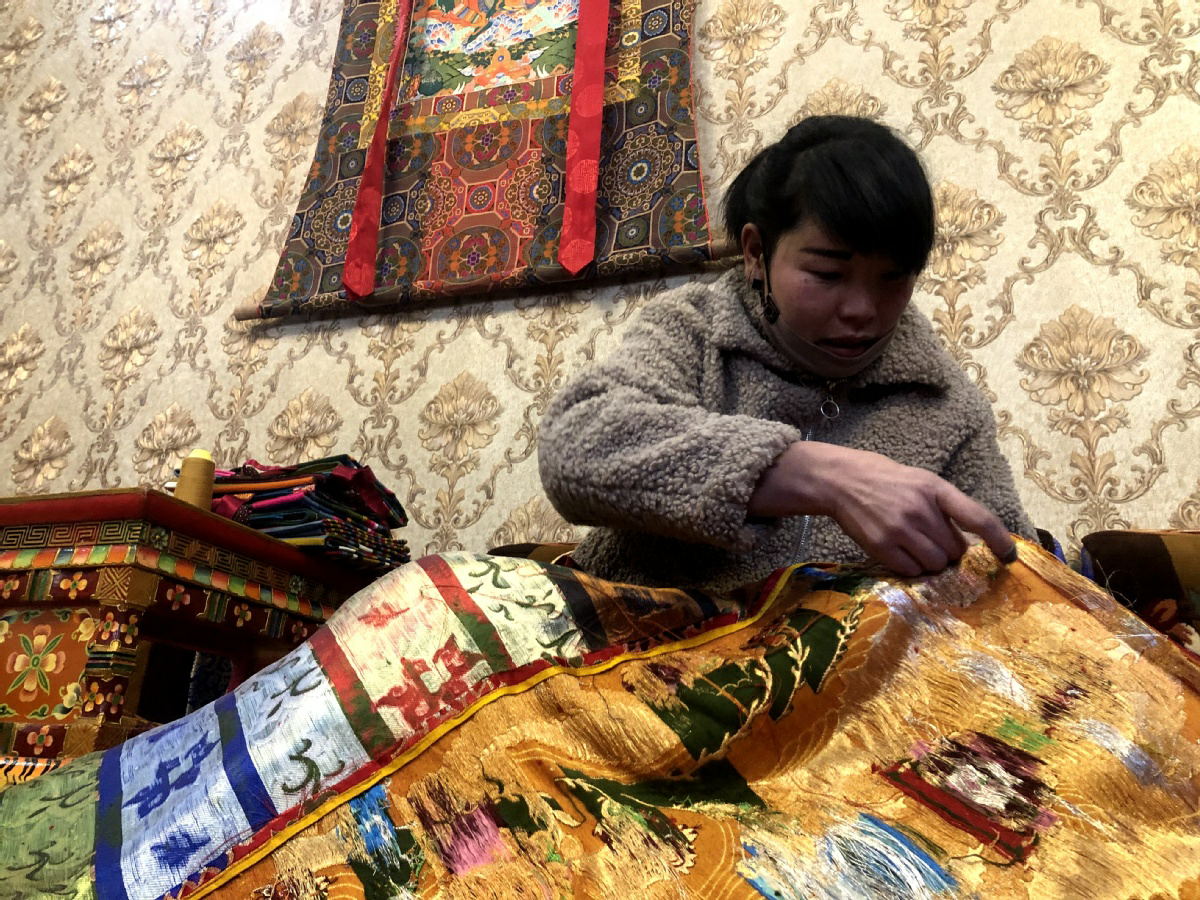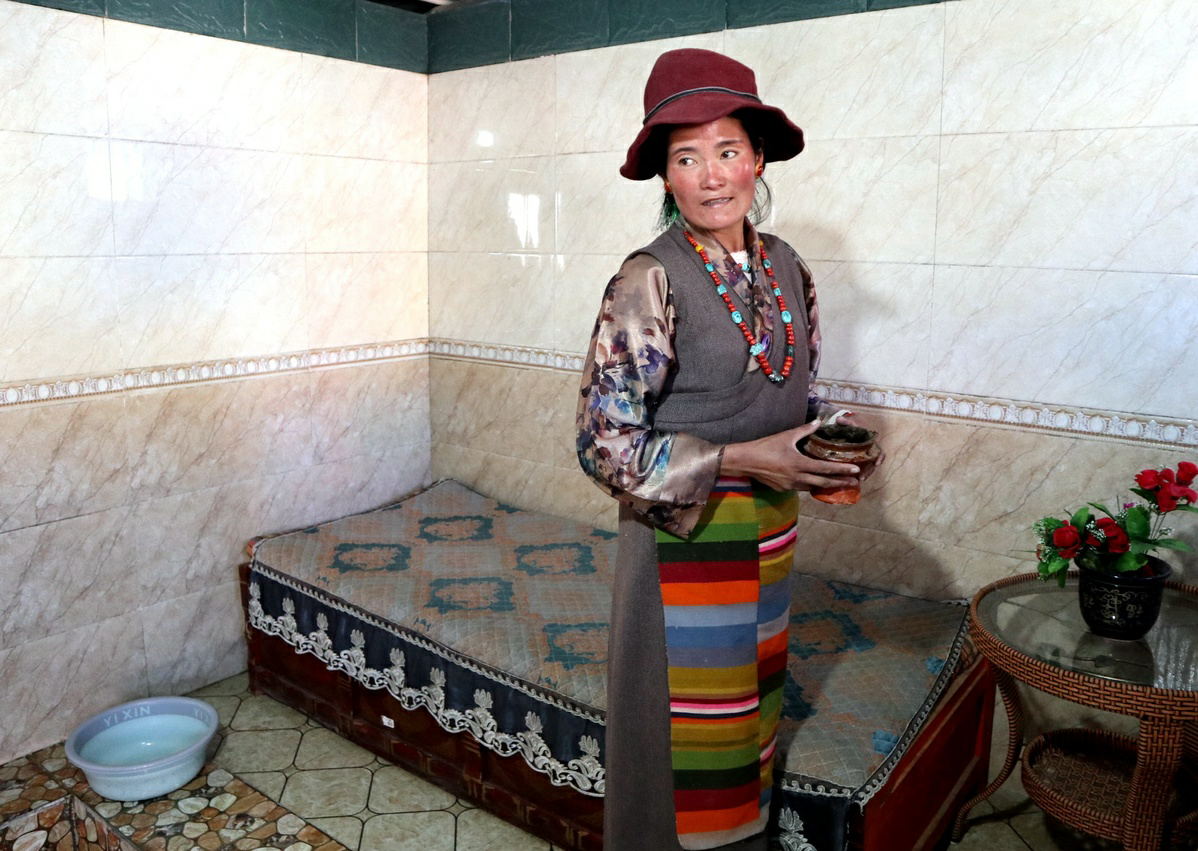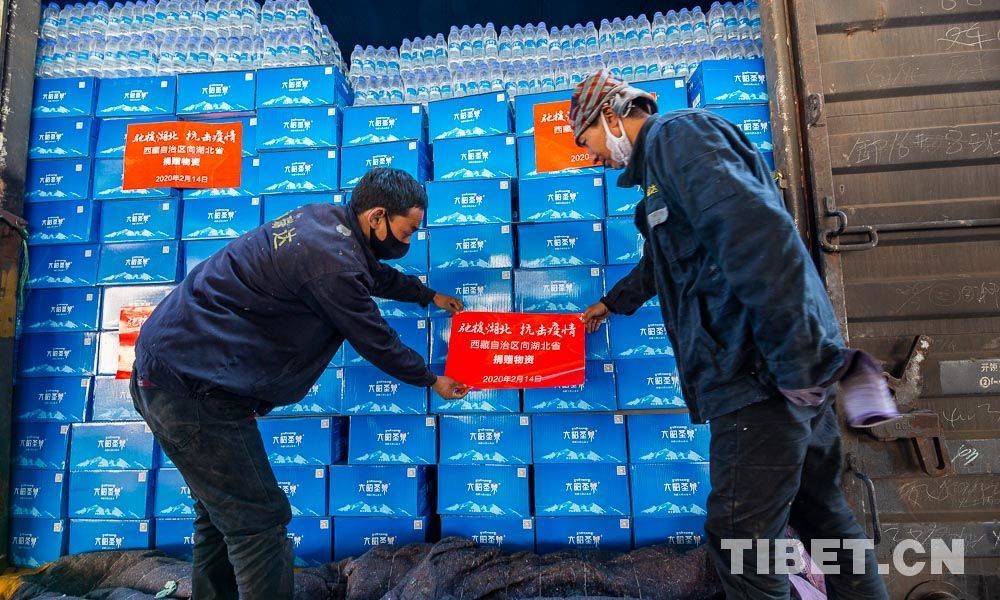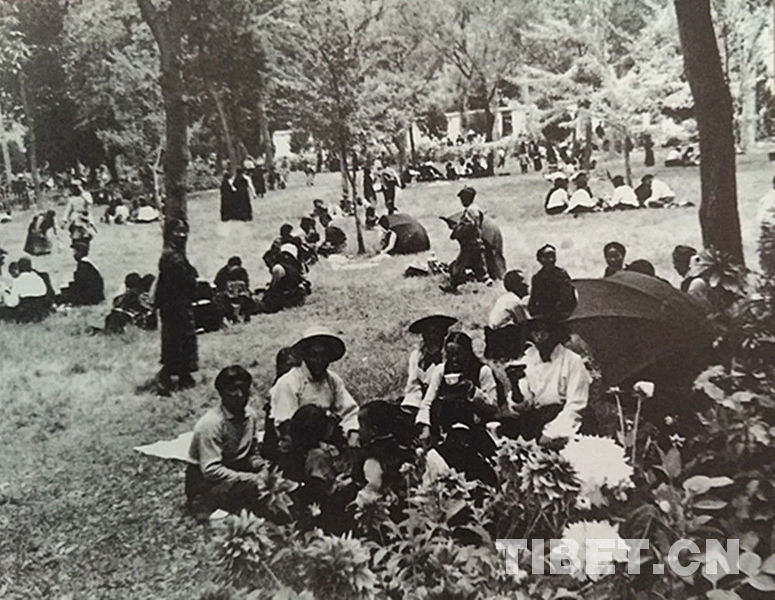Tibet's Shigatse dumps poverty label

A Tibetan woman works in a clothing production workshop in Shigatse's Samdrubtse district. The workshop has been supported by the local government as a poverty alleviation project. [Photo by Palden Nyima/chinadaily.com.cn]
Authorities in Shigatse, Tibet autonomous region, announced recently that they have removed all the city's 18 impoverished areas from the poverty list.
To date, the city's 172,900 impoverished people in 1,669 villages and residential communities have all been stripped of the impoverished label as their incomes have improved.

Chongdrol, a resident of Tibet's Shaitongmon county, operates a hot spring bath business. [Photo by Palden Nyima/chinadaily.com.cn]
Tibet has been one of China's main battlefields against poverty for geographical and historical reasons ever since the central government launched a nationwide effort in 2016 to improve the lives of the poor. Shigatse has been one of the region's main targets for poverty alleviation.
Over three years, numerous steps have been taken to improve the local economy, including attracting investment, creating new jobs, relocating residents from less habitable places, setting up educational funds and implementing a variety of social welfare programs.
Phurbu Phutri, a resident of Kochak village in the city's Samdrubtse district, described herself to Kuaisou Xizang, a local news portal, on Sunday as one of thousands of beneficiaries. She has been relying on a locally based highland barley production company to earn a steady income for her family. The company was founded in 2006. Phurbu Phutri's job is packaging and sealing barley biscuits and cookies.
"The company is very close to my home, and I am satisfied with the salary here," she said. "I like this job."
Most of the city's 100,000 rural residents have benefited by working in various local sectors, including forage grass, sheep, yak, organic vegetables, tourism, trade and ethnic handicrafts.


